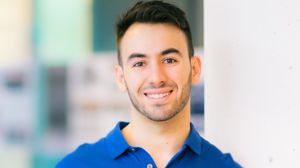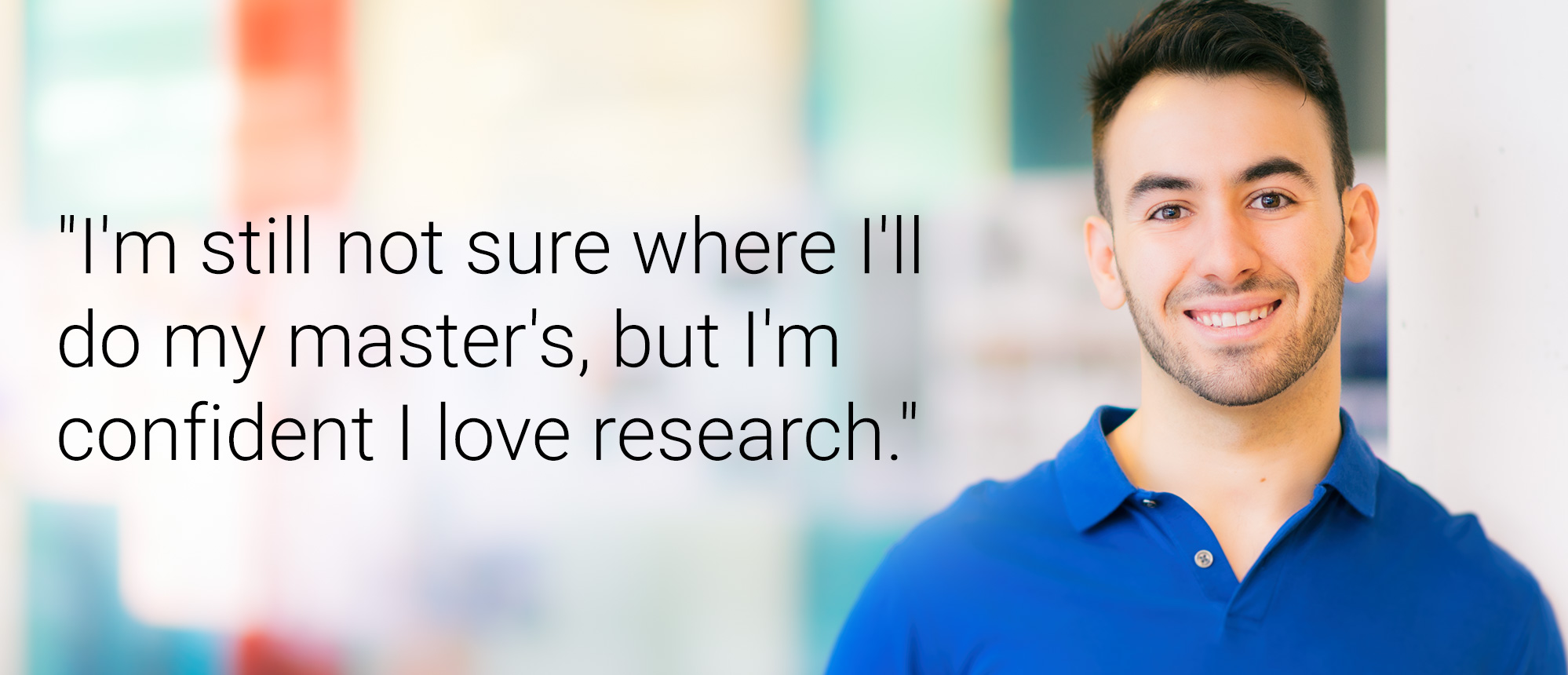

For Kinesiology student Massimo Nardone, there was one lecture in particular that got his blood pumping, his mind working – and his academic career moving.
Nardone had been in Dr. Philip Millar’s exercise physiology class at the University of Guelph-Humber when inspiration struck. It was a lecture on human cardiovascular physiology, and since Nardone had already done a field placement in cardiac rehabilitation at Southlake Regional Health Centre, he had a pre-existing interest that was piqued.
After the class, he visited Dr. Millar’s office to discuss potentially collaborating with the instructor for his fourth-year project. Instead, Dr. Millar had a job opportunity in mind.
“I got a full-time position last summer in his lab,” Nardone said. “We ended up getting a research grant from the University of Guelph-Humber and we worked on two projects at once.
“It was a pretty cool experience.”
As a result, by last September, Nardone had already been published for the first time. He was a part of Dr. Millar’s team of authors for an article in the Journal of Applied Physiology examining the validity of measuring resting muscle sympathetic nerve activity using short sampling durations, which Nardone explains was a study probing the effectiveness of a microneurography device – a needle thinner than an acupuncture pin – to measure and record nerve activity.
Now, Nardone is assisting in Dr. Millar’s research focusing on acute endothelial dysfunction and exercise – or, in other words, the effect of reduced bloodflow on exercise tolerance and arterial stiffness.
Nardone presented a poster based on the research at the recent Ontario Exercise Physiology Conference in Barrie. There, he met university students from other labs around the province who were curious about his research and methods, which involved volunteers being submerged from the waist down in a pressure tank (Nardone tried it, and said it was “pretty cool”).
Certainly, Nardone’s research experience has convinced him to pursue graduate school when he’s completed his work at UofGH. And the fact that he’s already been published gives him a rare advantage as an applicant.
“I think I’m going to do a master’s next year. I still don’t know where I’ll do my master’s, but I’m confident I love research and this is where I want to go right now.”
Meanwhile, he’s still thankful that a chance conversation with his instructor has led to such a fruitful experience.
“I love the close connections with the professors here,” he said. “I just scheduled a meeting with Dr. Millar, went into his office, told him how much I liked his research, and the next thing you know I’m in his lab. It’s really cool that you can have good connections with the instructors and develop those relationships.”
Learn more about Research at the University of Guelph-Humber.
Learn more about Kinesiology at the University of Guelph-Humber.

